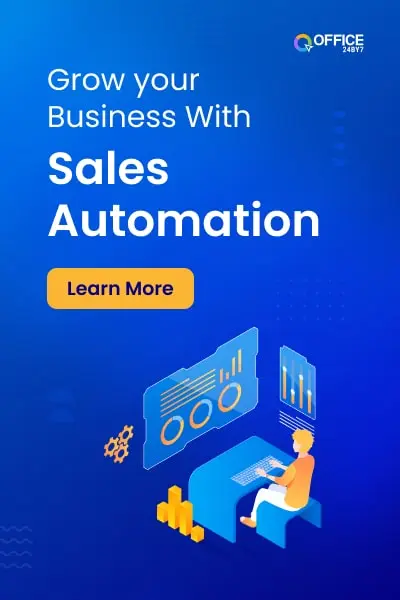The “sell me this pen” is the most cliched one-liner in the sales industry, a relic of an outdated sales methodology that keeps popping up in every other interview call where you really wish there was somebody in the panel who is a bit more realistic to impress you.
No longer does this question align with the nuanced, customer-centric approach required in today’s sales landscape. Instead of relying on such trick questions that are outdated and which people could come prepared for or even google up to learn about, interviewers should focus on evaluating a candidate’s ability to connect with customers, understand their needs, and offer solutions that create genuine value.
The best salespeople are those who can build relationships, earn trust, and navigate complex sales processes—not just those who can deliver a snappy pitch for a pen.
By shifting the focus of sales interviews to real-world scenarios and meaningful conversations, companies can better assess a candidate’s potential for success and find the right talent to drive their sales efforts forward.
Before we fully forget this age-old challenge, let’s learn a thing or two from it!
What to Learn From the “Sell Me This Pen” Challenge?
It is quite astonishing to think how a seemingly simple task has stumped countless aspiring salespeople and even seasoned professionals. So today, we are going to break down the art of selling a pen and provide you with the basic understanding of this exercise.
Understanding the Challenge
The challenge “Sell me this pen” isn’t really focussing on the pen. It’s a test of your ability to think on your feet, understand customer needs, and create value where there seemingly is none. The interviewer isn’t interested in your knowledge of pens but they are interested to see how you will engage with the customer in the process. So, before you start rattling off features like “smooth ink flow” or “ergonomic design,” take a step back and approach this like a real sales situation.
The Mistake Most People Make
The most common mistake salespeople make when faced with this challenge is immediately launching into a list of features. They’ll talk about the pen’s color, the quality of the ink, or how comfortable it is to hold. While these might be true and great points to discuss, they miss the point entirely. Remember, good sales aren’t about the product; it’s about the customer.
Step 1: Ask Questions
- “How often do you use a pen in your daily work?”
- “What kind of writing do you typically do?”
- “Have you ever been in a situation where you really needed a pen but didn’t have one?”
Step 2: Listen Actively
Listen to what your customers are talking about and engage with them, making them talk more. And when they talk more, they will unconsciously give you the points that you need to focus on. For example, if your customer is talking about losing pens very often and is not ready to invest in a significant mental effort to worry about the pen or to take care of it, then you know what to focus on.
A sales CRM software is a tool that not only streamlines your sales process but also helps you to understand and note down any information that the customer thinks is relevant. You can use the lead notes section of your lead management segment to attach detailed notes to your individual leads so that you are able to recollect every interaction and statement that you communicated. Sometimes writing notes can be tiresome instead try the Office24by7 CRM software solutions which provide a built-in communication system which can help you automatically capture your call recordings.
Step 3: Identify the Need
You need to help your customer identify the need for your product. For that, you need to put them in a problem where the only solution is having a pen. Maybe they need a pen to sign a contract or to note down an important phone number.
Step 4: Create Value
Now that you understand the customer’s needs, it’s time to position the pen as a solution. But remember, you’re not just selling a pen; you’re selling a solution to their problem. If they need something reliable for signing documents, focus on the pen’s durability and professional appearance.
Step 5: Use Storytelling
This approach helps the customer visualize the pen’s value in a real-world context. So that they see the actual need and the solution working together for their interests.
Step 6: Address Objections
In our case, the customer is concerned about losing the pen. So they are going to mention the same. In such a case you could tell them about the pen’s distinctive design which makes it easy to keep track of rather than putting a lot of effort into tracking it. You should be welcome to objections but more importantly, you should be able to address these objections even before the customer raises it.
Step 7: Create Urgency
Give the customer a reason to make a purchase at the very moment. Give him a special offer or a condition that makes the deal special. For example, let him know that there is only one more pen left in the limited edition shape or so. Or if possible give a discount.
Step 8: Open the Deal
When it comes to opening a deal, never give the customer an option for Yes or No. Let him discuss his choice of options. So instead of asking if he would like to buy a pen, ask him if he is looking to get one pen or two pens. This approach assumes the sale and moves the conversation forward to the details of the purchase rather than getting to a complete stop.
Easily create deals from your leads and contacts using the deal management module of office24by7 sales CRM software. All your lead details like the lead notes and interaction details are easily transferred to the deal when it is created. This helps your AEs to stay on top of the deals even though they have not handled these leads from the learning phase.
Some Great “Sell Me This Pen” Answers
Here are three practical use cases for the “Sell this pen” situation, each demonstrating different aspects of effective sales techniques: You can use these as a boot camp for training your brain to act effectively at all sales propositions.
Scenario: You’re selling to a high-level executive who frequently signs important documents.
Approach:
- Ask: “How often do you sign crucial contracts or documents?”
- Listen: They mention daily signings and the importance of leaving a good impression.
- Identify need: Reliability and professional appearance are key.
- Create value: “This pen’s smooth ink flow ensures clear, crisp signatures every time. Its elegant design also makes a subtle statement about your attention to detail.”
- Storytelling: “You’re on the cusp of a million-dollar deal. The contract’s ready, and all that’s missing is your signature. But you don’t have a pen nor can you look silly running around to get you a new pen. But think you calmly reach into your pocket, and out comes a sleek, perfectly balanced pen with a great flow of ink. With a simple gesture, you have made a statement that they are going to remember about you. “
- Close: “Would you prefer the classic black or the distinctive blue ink for your signatures?”
Scenario: Your prospect is an academic who constantly loses pens.
Approach:
- Ask: “How many pens would you say you misplace in a typical week?”
- Listen: They admit to losing several pens weekly, often at critical moments.
- Identify need: Memorability and ease of replacement.
- Create value: “This pen’s unique design makes it easy to clip on as well as stand out, reducing the chance of misplacement. Plus, our subscription service ensures you always have a backup delivered monthly!”
- Address objections: “While it’s a bit pricier than standard pens, think about the time and frustration you’ll save by always having a reliable and robust pen at hand. You could make it a part of your daily accessories.”
- Create urgency: “If you start the subscription today, we’ll include a magnetic desktop pen holder designed to keep your pen visible and accessible.”
- Close: “Shall we set up your monthly delivery for the 1st or the 15th?”
Scenario: You’re pitching to a business owner who prioritizes sustainability.
Approach:
- Ask: “How important is environmental sustainability in your choice of office supplies?”
- Listen: They express strong commitment to reducing plastic waste.
- Identify need: Eco-friendly products that align with company values.
- Create value: “This pen is made from 100% recycled materials and is itself fully recyclable. It’s refillable, reducing waste, and each refill equates to 5-7 disposable pens.”
- Storytelling: “By switching your office to these pens, you could prevent thousands of plastic pens from entering landfills each year. And you would be doing it with an eco-friendly product just in case you lose one of these outside the office. That would be one office with almost no carbon footprints.”
- Address objections: “While the initial cost is higher than disposable pens, the refills are extremely cost-effective, saving money in the long run.”
- Close: “Would you like to start with a trial pack for your executive team, or shall we calculate the yearly supply for your entire office?”
Wrapping Up
There are various limitations to this challenge in the 21st century. Some of it being:
People can easily be prepared for such trivial questions by finding pre-prepared answers online and rehearsing them before the interview.
It is an outdated sales practice which can sometimes make interviewees wonder if the panel is aware of the modern day sales practices.
It is a flawed concept that a person who can sell a pen can sell anything. In fact, to sell a particular type of product requires a particular level of knowledge and understanding of the product and the person who it is being sold to.
There are unlimited correct answers to this question and it may or may not satisfy the panel of interviewers.
So what exactly can be the best answer for this question in this time and space? Here’s a fresh take on how to approach this question in a way that reflects modern sales principles:
Interviewer: Sell me this pen.
Candidate: OK. Here is your free pen. (Hands the pen back to the interviewer.)
Interviewer: (Taking the pen back.) What!
Candidate: Allow me to explain. This is a used pen. But I see that a pen is of more valuable tool for a man like you. Instead of selling this pen to you, I am ready to give it for free, as a gesture of goodwill and friendship. If what I do can produce those feelings between us, that might be something more valuable to me than your money.
This response is insightful and rooted in psychological concepts of influence and reciprocity. It reflects principles from Robert Cialdini’s renowned book, “Influence: The Psychology of Persuasion”, which emphasizes how small actions can foster rapport and lead to deeper connections.
The ability to understand and connect with customers far outweighs the impact of rehearsed pitches. By focusing on genuine interactions and thoughtful responses, sales professionals can build stronger relationships and deliver true value. Moving beyond outdated interview challenges like “sell me this pen” allows companies to identify talent that aligns with modern sales strategies, ultimately driving long-term success.





